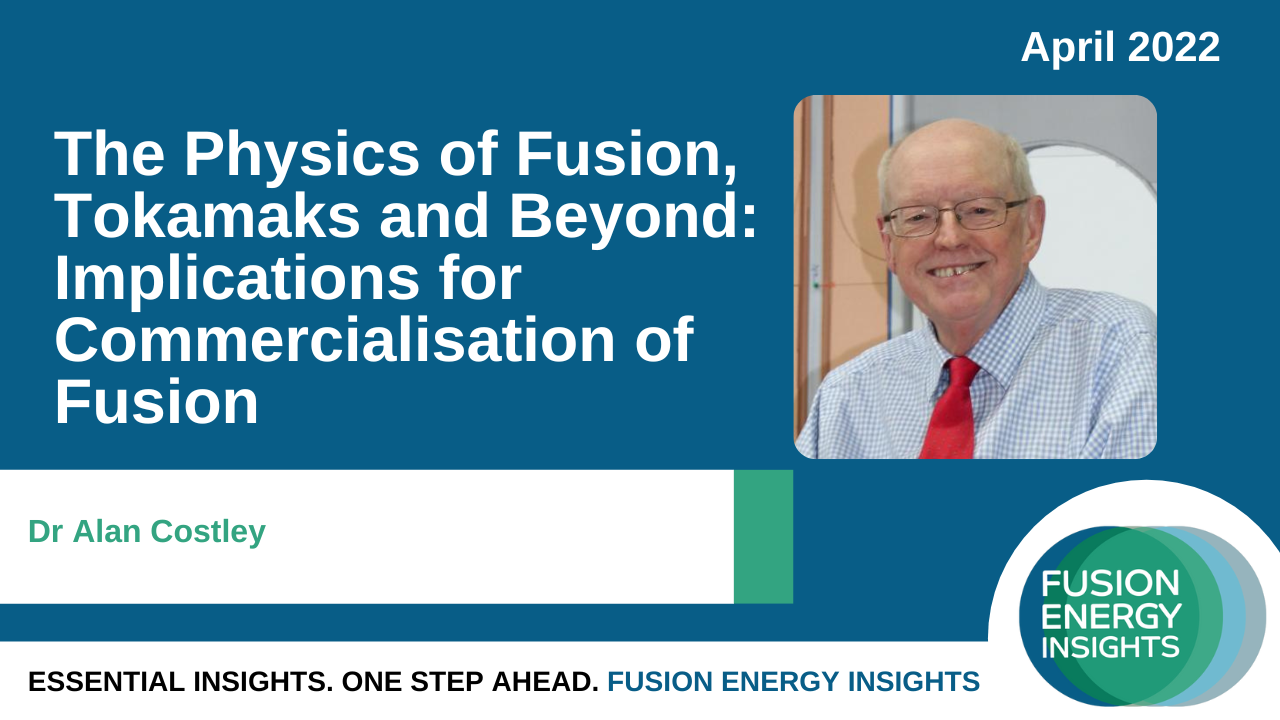The Physics of Fusion, Tokamaks and Beyond: Implications for Commercialisation of Fusion
June's Q&I Insights was with Dr Alan Costley on The physics of fusion, tokamaks and beyond. Dr Costley has a PhD in plasma spectroscopy from Imperial College London, and has worked in fusion for more than 45 years including senior appointments at the JET project, Culham Laboratory and at ITER, as well as collaborations and short stays at General Atomics (USA), the Plasma Fusion Center, MIT (USA), the Kurchatov Nuclear Research Centre (RF), and the Commissariat À L'énergie Atomique (France).
 Here are three insights taken from the event:
Here are three insights taken from the event:
1. Tokamaks don't need to be large in order to produce fusion energy gain
The fusion power gain depends on three important parameters, density, temperature, and energy confinement time (this is called the Lawson criteria). It is expected that as you increase the size of the machine, the confinement time will also increase, producing more fusion power.
However tokamaks are subject to operational limits, which restrict these parameters and so density can only be scaled up so far before plasma confinement is lost. These limits on density and pressure are inversely proportional to the size of the machine, and so it is not always best to keep increasing the size of the fusion machine. In principle, smaller devices can produce as much power gain as bigger devices.
(Alan Costley explains this idea here - https://www.youtube.com/watch?v=CbMpEtP245A)
2. Although large machines aren't necessary, engineering considerations limit how small machines can be
Despite these limits to the size of the machines, tokamaks will still end up being quite big (e.g. medium-sized tokamaks like JET), since to produce cost-effective electricity, engineering considerations come into play.
In order to handle the high power loads in tokamaks, power exhaust regions need to be designed with appropriate materials that can handle the high heat fluxes. These materials have limits e.g. on power loads and stresses, and in order to get the power per unit area of materials to below tolerable material limits, the surface area must be increased. It’s this factor which drives up the size of the machines, not the physics.
Fusion Energy Insights will be hosting an event with Amanda Quadling from UKAEA to discuss materials challenges for fusion energy in October!
3. There are many approaches to fusion and a variety of applications of fusion technology, so there could be more than one fusion power solution
There is a wide range of approaches to fusion energy, with both private companies and public institutes pursuing different techniques. Fusion technology also has a number of applications—both for electricity production and beyond, such as process heat for industry, hydrogen production, biomass conversion and desalination. Different fusion approaches will fit with some of these applications better than others, and so by having more than one solution to fusion power a variety of industries will benefit.
Some of these concepts will be smaller than others, especially if the approach involves direct conversion to electricity, so we could see a range of machine sizes for different applications of fusion energy.
A full pdf summary of key insights, plus the Q&A event replay, is available to Game Changer members of Fusion Energy Insights. Join us now for full access to all the insights.
